© 2025 MJH Life Sciences™ , Patient Care Online – Primary Care News and Clinical Resources. All rights reserved.
Osteoporosis Update
Bisphosphonates, teriparatide, vitamin D, calcium, raloxifene, vertebroplasty/kyphoplasty: here’s the latest on osteoporosis.
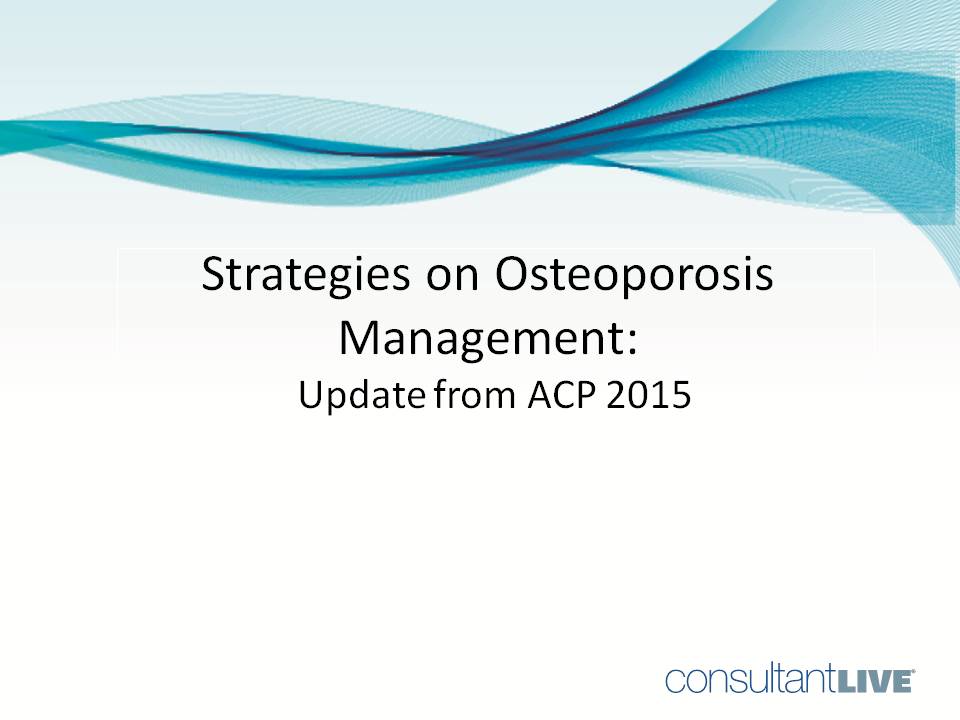
This slide show summarizes highlights of a presentation from the American College of Physicians’ 2015 annual conference about current strategies for managing osteoporosis.
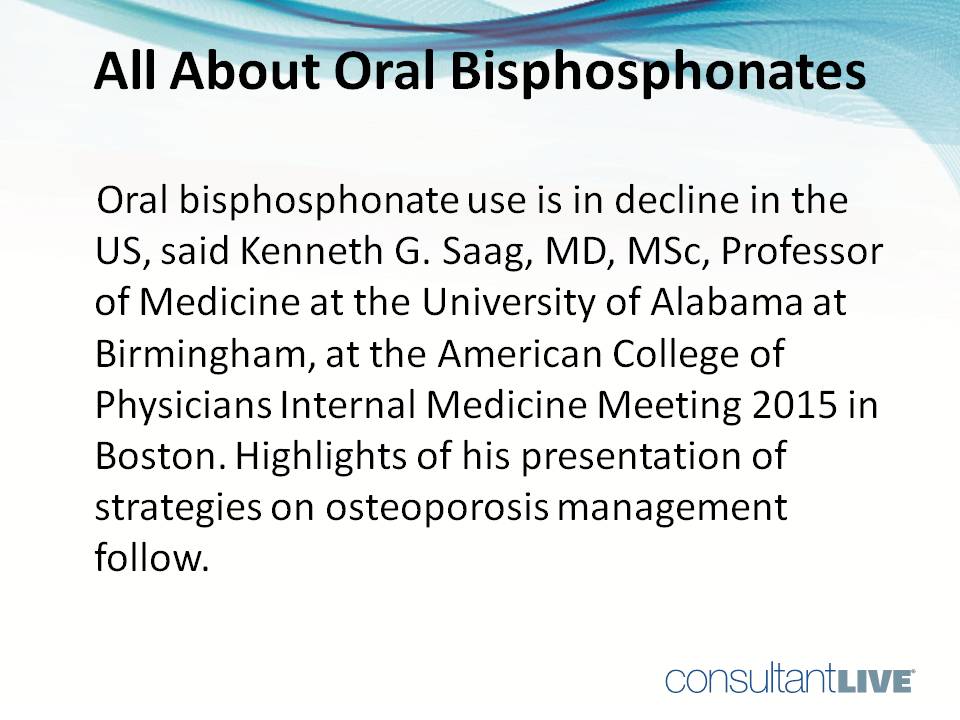
Oral bisphosphonate use is in decline in the US, said Kenneth G. Saag, MD, MSc, Professor of Medicine at the University of Alabama at Birmingham, at the American College of Physicians Internal Medicine Meeting 2015 in Boston.
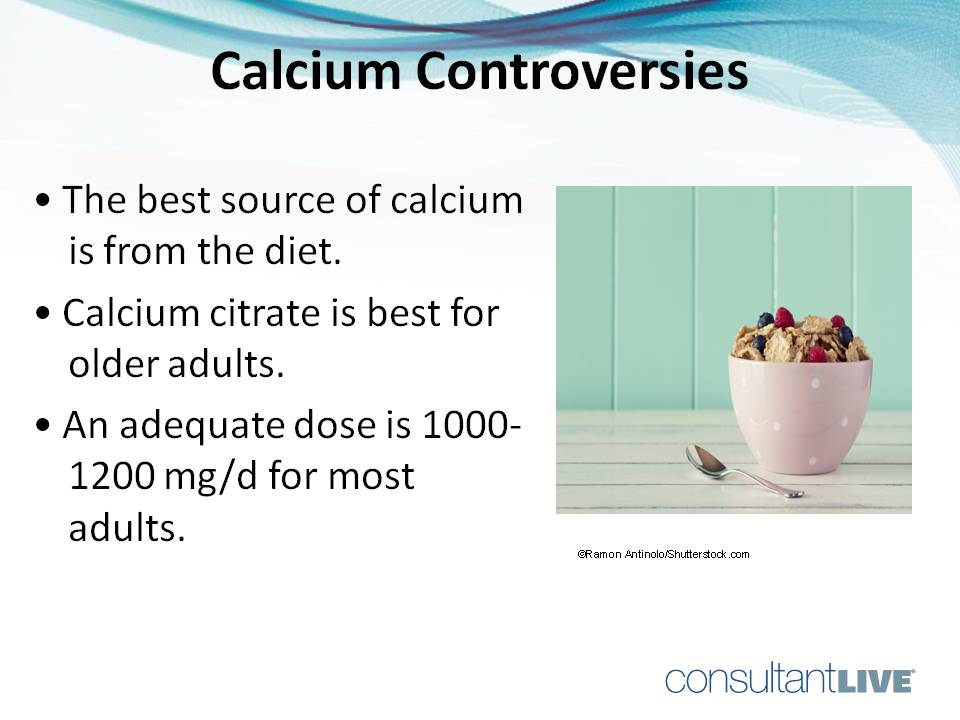
Adequate calcium and vitamin D is essential for bone health; vitamin D may have other health benefits as well. Supplements won’t help if a patient is not deficient or is taking an inadequate dosage. Overzealous use of calcium and vitamin D supplements may be deleterious. The best source of calcium is from the diet. Calcium citrate is best for older adults. An adequate dose is 1000-1200 mg/d for most adults.
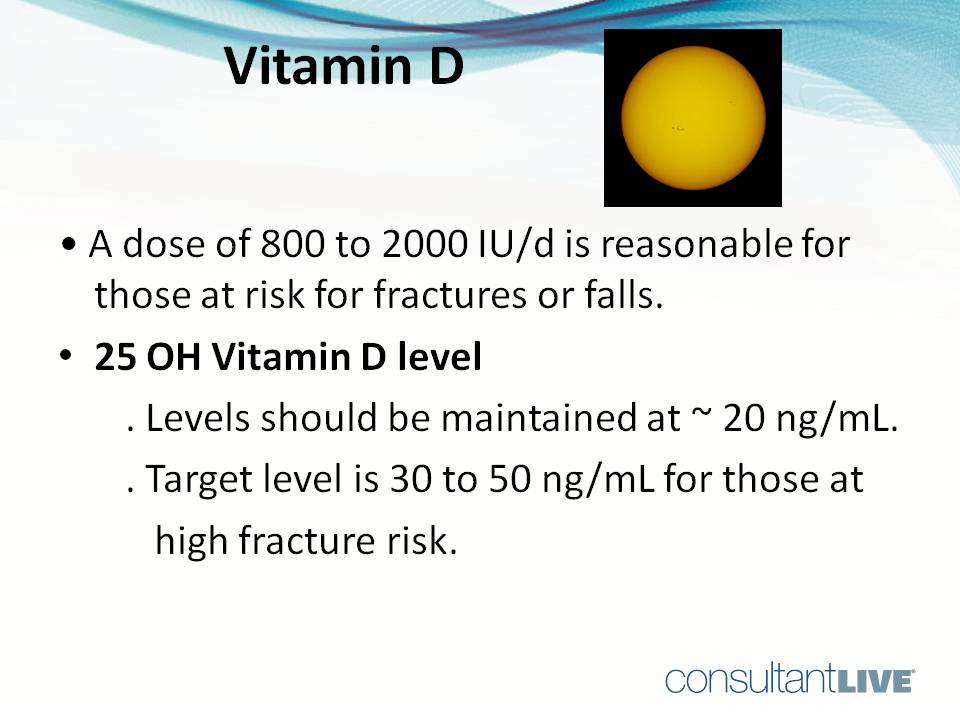
Avoid vitamin D doses that are not adequate or are too high. A dose of 800 to 2000 IU/d is a reasonable supplement for those at risk for fractures or falls. Levels of 25 OH vitamin D should be maintained at approximately 20 ng/mL. The target level is 30 to 50 ng/mL for those at high fracture risk.
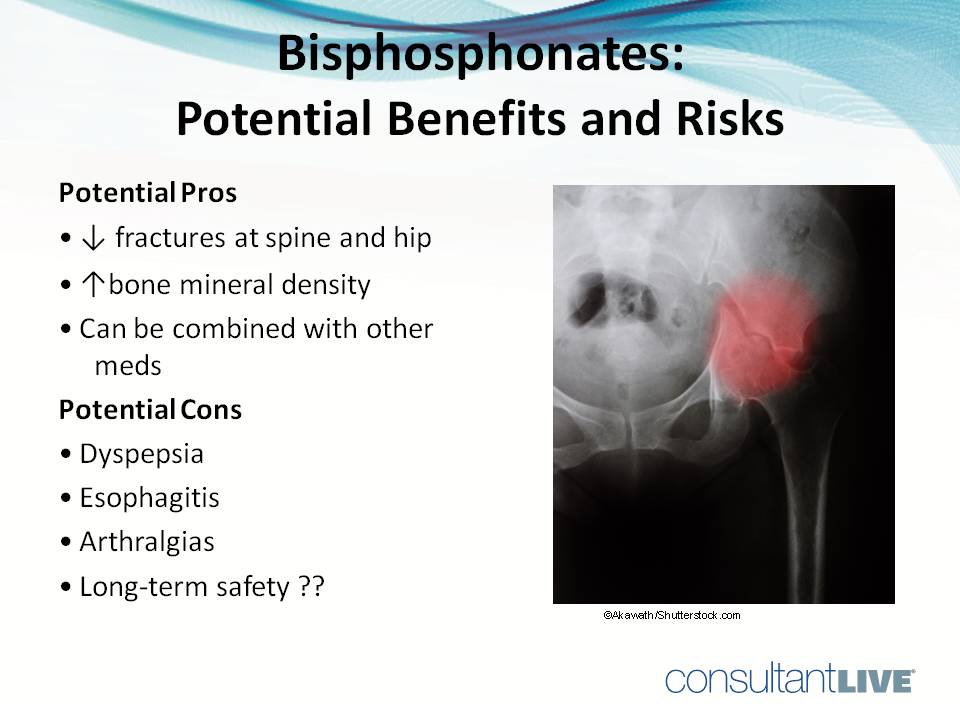
Potential benefits of bisphosphonates include reduced fractures at spine and hip; increased bone mineral density; ability to combine with other medications. Potential risks include dyspepsia, esophagitis, and arthralgias, and long-term safety still questioned.
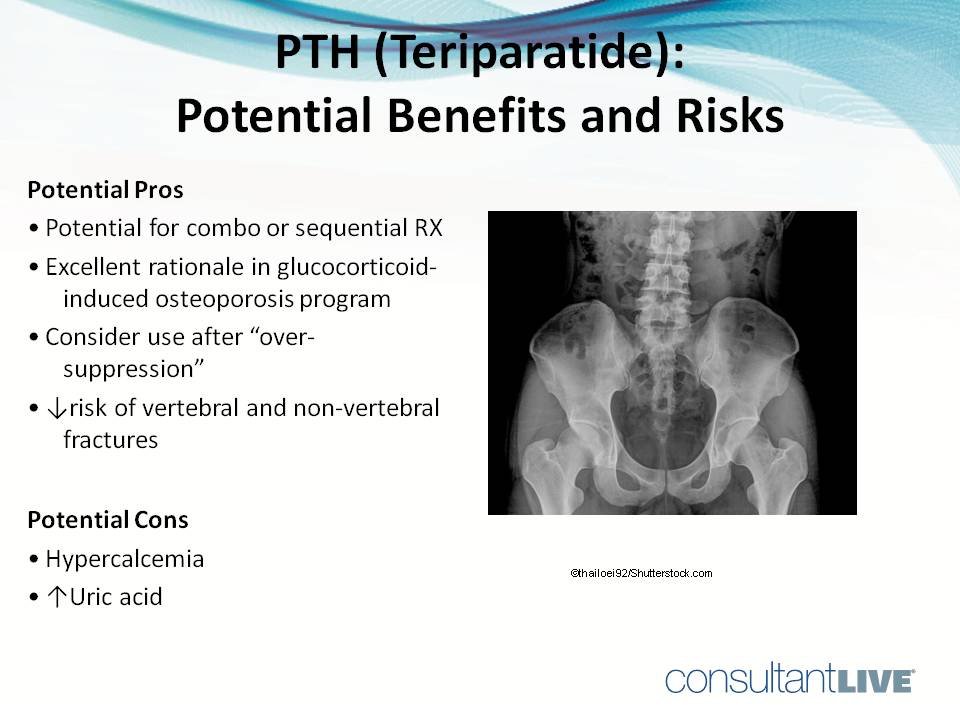
Potential benefits of PTH (teriparatide) include a reduction in risk of vertebral and non-vertebral fractures, potential for combination or sequential therapy, and excellent rationale in glucocorticoid-induced osteoporosis program; consider use after “over-suppression.” Potential risks include hypercalcemia and uric acid elevation.

Among the potential benefits of raloxifene: improved bone mass; reduced number of vertebral fractures; no breast tenderness; no uterine bleeding or spotting; favorable lipid effect; apparent reduced risk of breast cancer.
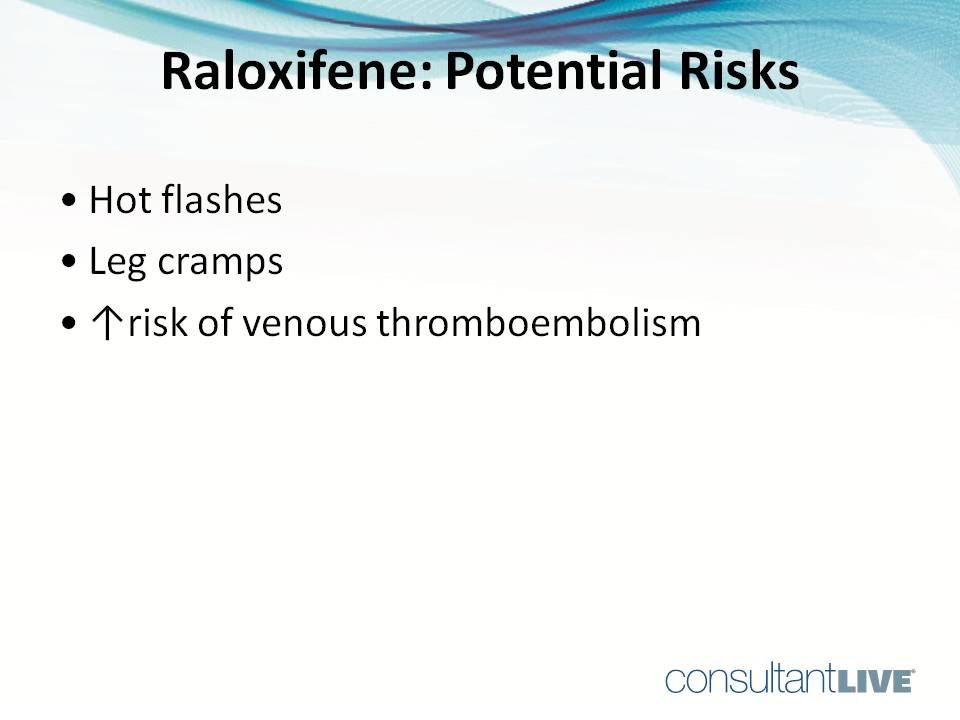
Hot flashes, leg cramps, and increased risk of venous thromboembolism are key potential risks associated with raloxifene therapy.
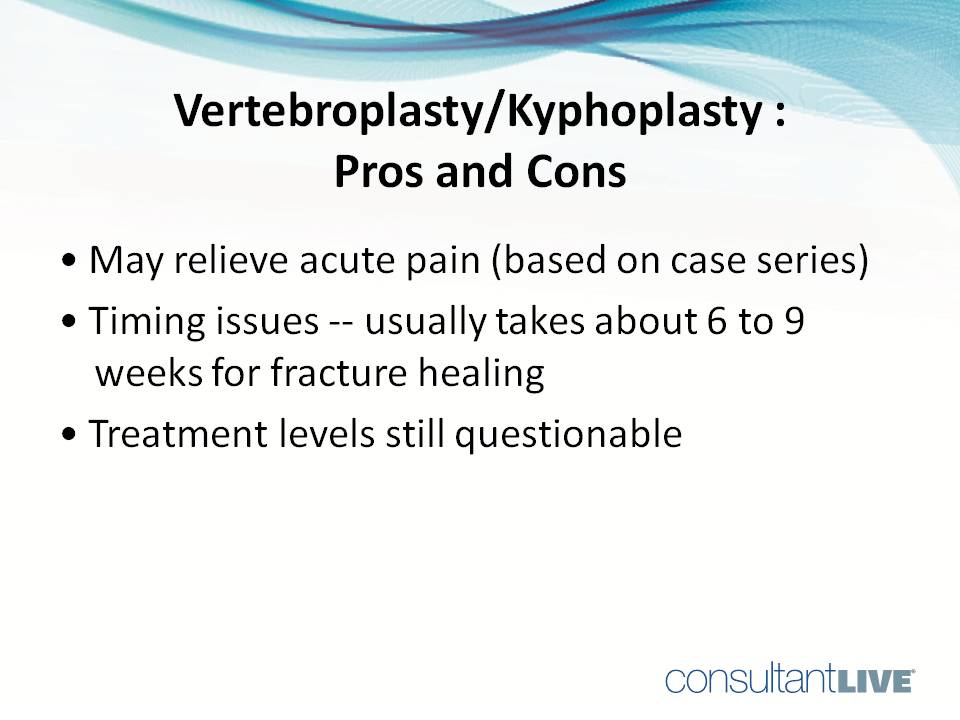
Vertebroplasty/kyphoplasty may relieve acute pain (based on case series). Fracture healing may take 6-9 weeks.
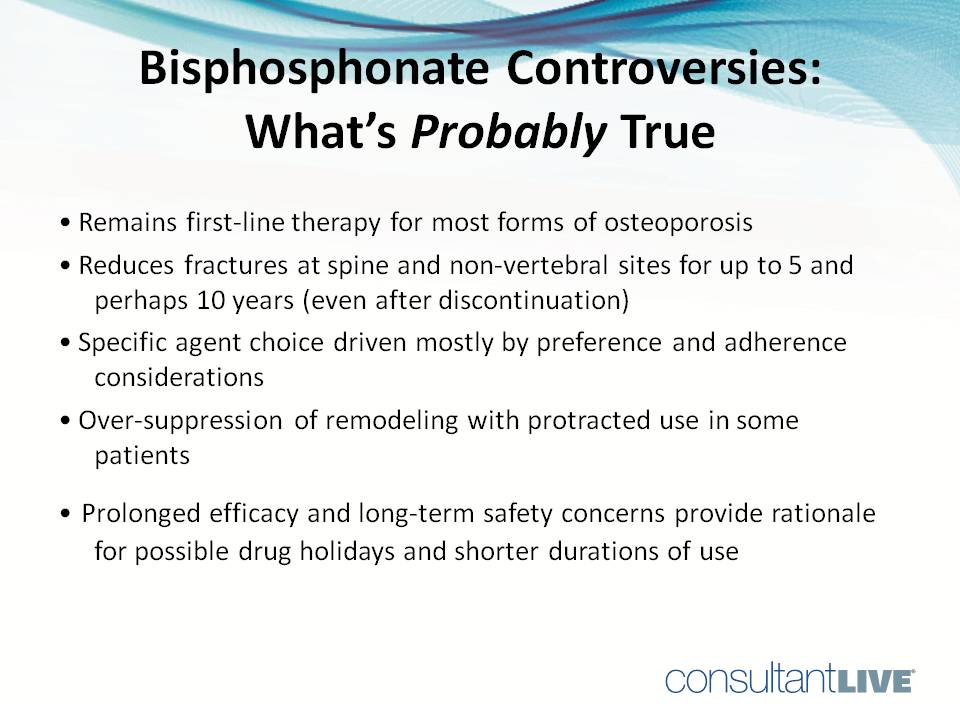
The following are probably true about bisphosphonates: these agents remain first-line therapy for most forms of osteoporosis; they reduce fractures at spine and non-vertebral sites for up to 5 and perhaps 10 years (even after discontinuation); the choice of specific agent is driven mostly by preference and adherence considerations; over-suppression of remodeling can occur with protracted use in some patients; prolonged efficacy and long-term safety concerns provide rationale for possible drug holidays and shorter durations of use.
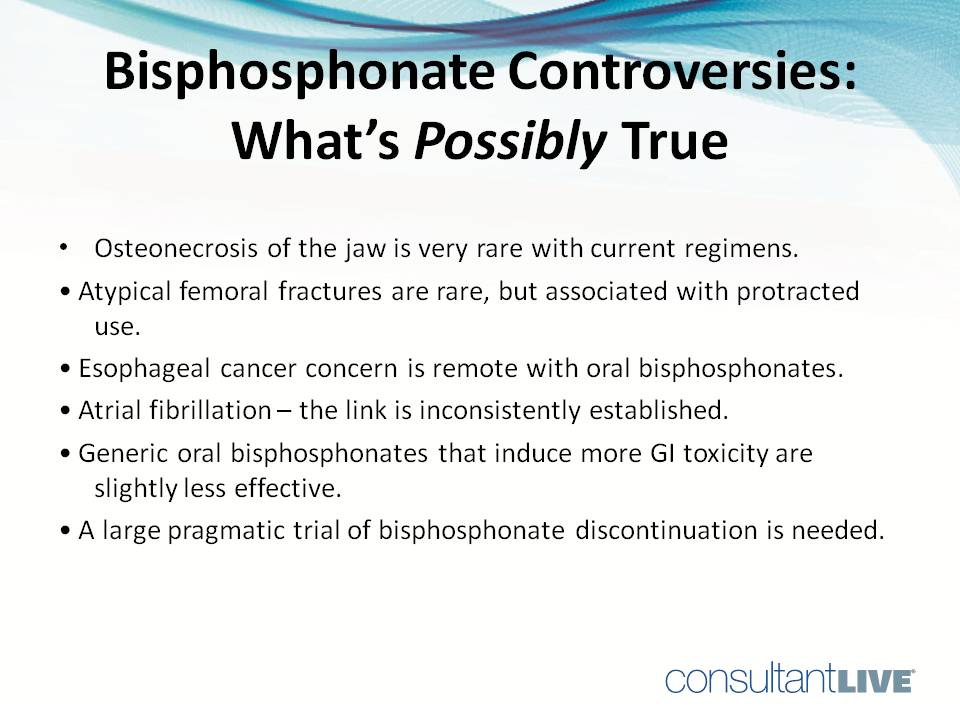
The following are possibly true about bisphosphonates: osteonecrosis of the jaw is very rare with current regimens; atypical femoral fractures are rare, but associated with protracted use; esophageal cancer concern is remote with oral bisphosphonates; atrial fibrillation-the link is inconsistently established; generic oral bisphosphonates that induce more GI toxicity are slightly less effective. A large pragmatic trial of bisphosphonate discontinuation is needed.
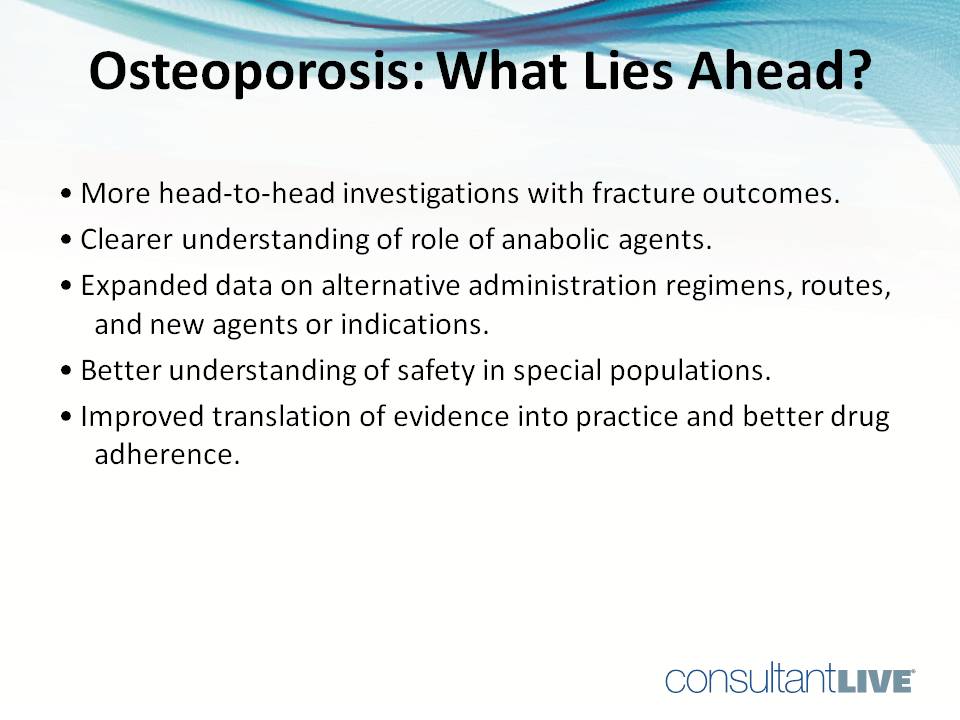
What’s needed are more head-to-head investigations with fracture outcomes; a clearer understanding of role of anabolic agents; expanded data on alternative administration regimens, routes, and new agents or indications; a better understanding of safety in special populations; and improved translation of evidence into practice and better drug adherence.
The use of oral bisphosphonates is in decline in the US, said Kenneth G. Saag, MD, MSc, Professor of Medicine at the University of Alabama at Birmingham, at the recent American College of Physicians Internal Medicine Meeting 2015 in Boston.Highlights of Dr Sagg’s presentation of strategies on osteoporosis management follow.

